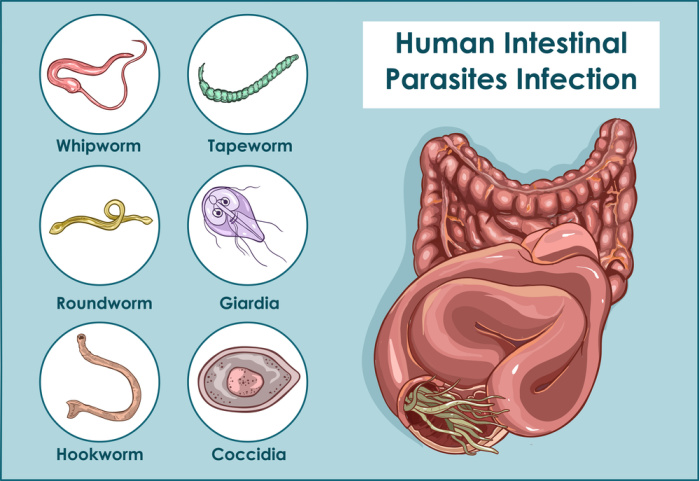Autoimmune Disease: What You Need to Know
Most days we take for granted just how amazing our immune systems really are, until we find ourselves getting sick. Our immune systems are made up of cells, tissues, molecules, and organs, all of which work incredibly hard to fight off viruses, bacteria, and other diseases that invade our bodies. Autoimmune disease: what you need to know.
However, once in a while, and for unknown reasons, our immune systems turn on the very cells that it’s meant to protect. This can cause any number of autoimmune diseases, and there are around 80 to 100 different types out there.
Autoimmune Disease: What You Need to Know
There are an estimated 50 million Americans that have some form of autoimmune disease, where women are more likely to be affected than men. Some of them you may already know about, like Multiple Sclerosis, Type 1 Diabetes, and Rheumatoid Arthritis. But there’s also Lupus, Celiac Disease, Sjogren’s Syndrome, Psoriasis, Hashimoto’s Disease, and Grave’s Disease amongst many others. Here’s more about autoimmune disease and everything you need to know.
What Are the Symptoms?
Although there are so many different types of autoimmune diseases, they all share several of the same symptoms. In most cases, autoimmune diseases are likelier to make life miserable rather than proving fatal. Most people feel fatigue and lethargy, muscle aches, along with a low-grade fever and an ill feeling (Malaise).
Hair loss and numbness in the hands and feet are a few others. There are often other symptoms as well, ranging from mild to severe at times.
Other symptoms depend upon the location of the particularly abnormal immune response, while others may begin to develop over a longer period of time. Patients that suffer from one autoimmune disease are far likelier to develop another autoimmune problem at some point.
Diagnosing Autoimmune Disease
If your primary care doctor suspects that you might have a particular disease, he or she will have laboratory tests performed, and possibly imaging studies conducted to get a better idea of what’s actually going on. Some patients mention that the entire process can be drawn out and lengthy at times. That’s because there isn’t a particular test that can diagnose several of the diseases right away, and it’s more a process of elimination than anything.
At this point, your regular care physician can transfer you to a specialist who works on patients with autoimmune diseases. This is where you may get set up with a Dermatologist, Neurologist, Gastroenterologist, or an Endocrinologist, to find out what treatment is best for you.
What are the Treatments?
Treatments and medication will vary depending on the type of autoimmune disease that a patient has. It also comes down to the severity of the disease and the conditions that they are facing.
Relieving Symptoms
For patients that are struggling with mild pain, over-the-counter drugs like ibuprofen and aspirin can bring some relief. For symptoms that are more severe, they may require prescription medication to help with sleeping problems, rashes, fatigue, depression, and anxiety. There are times when the disease is even more severe and it requires patients to go into surgery or other treatments. In case you missed my post on 35 OTC Medications You Should Store
There are also prescription medications that work to suppress your immune system in order to help manage the disease and continue to allow your organs to work properly. People suffering from Lupus may have to take such drugs so that their kidneys will function the way that they should.
Other Alternatives
Some patients use alternative medications to bring relief from their symptoms. Acupuncture, chiropractic, herbal products, and hypnosis are just a few treatments used. Low doses of chemotherapy may also be used to help reduce inflammation.
How to Deal with Flares
A flare is a number of symptoms that come upon a person in a severe manner. Patients that have the disease need to pay close attention to what may cause these triggers to come about. A couple of common triggers include too much stress and being out in the sun for far too long.
It’s important that patients visit their doctor regularly, avoid their triggers, and follow their treatment plan to help prevent new flares.
Women Pregnant with Autoimmune Disease
Women that have an Autoimmune Disease can still have a safe pregnancy, but the risks can increase depending upon the type of disease that the mother has. Women who have Lupus run a higher risk for preterm birth and stillbirth. Pregnant women who have Myasthenia Gravis may have more difficulty breathing throughout the pregnancy.
It also might not be safe to take autoimmune medications throughout the pregnancy. If you have any one of the many autoimmune diseases out there and are hoping to get pregnant, make sure that you talk with your doctor beforehand to lower these risks.
What Else Can Patients Do?
Get Enough Rest
There are a host of other things that you can do to help feel better. For starters, patients need to make sure that they are getting enough rest at night. Not only does rest help your body and mind, but it gives your body enough time to keep itself from getting sick. Most of us need between 7 and 9 hours of sleep a night.
Reduce the Stress
Stress is another factor that can cause your symptoms to worsen. It’s best to keep your body and mind relaxed without allowing undesired stressors to get the better of you. Patients will often seek counseling, meditation, hypnosis, and guided imagery as good relaxation techniques.
Eat Healthier

Eating healthier foods with plenty of nutrients like fruits and vegetables, whole grains, low or fat-free milk products, and a leaner source of protein is another great thing that you can do for your body. For the most part, stay away from foods that contain too much salt, cholesterol, trans, and saturated fats.
Take the Time to Exercise
Exercise is another important stress reliever that’s good for your body. Find out what your doctor would recommend for you as far as physical exercise is concerned. Those suffering from joint or muscle pain will need a gentler and more gradual exercise program than others. Some patients enjoy more relaxing types of exercise like yoga and tai chi.
Final Word
There’s the possibility that you may have never heard of autoimmune disease, but it affects millions of people and many do not even realize that’s what they are dealing with. Autoimmune diseases are far more common in women and tend to run through the family.
Here is more information, and a breakdown of several of the most common autoimmune diseases and what they affect. What did you think of autoimmune disease: what you need to know?
Please exercise if possible, eat healthy, and keep prepping. Please stay well, my friends. May God bless this world, Linda
Copyright Images: Arthritis AdobeStock_119747348 by Narstudio, Healthy Food Deposit photos_167960472_s-2019






















Wife’s got lupus. It’s a tough thing to deal with.
Two of my daughters have Celiac’s Disease; one Marsh 1 and one Marsh 4. There are 4 levels of Marsh, 4 being the worst. The daughter with Marsh 1 doesn’t have to change to her diet, etc. but the daughter with Marsh 4 has to be ever so careful about everything she uses, eats! Alot of people say they’re “allergic” to gluten but it’s a diet fad that’s been going around for years. They avoid breads, etc. but most people have no idea how much gluten is in everything. And believe me, it’s in almost everything! In order for food to taste decent and not like cardboard is to load it up with sugar, like 4x more than normal. So a person doesn’t lose weight on gluten-free diets; they gain it from all the sugar. Celiac Disease slowly starves the body of nutrients on top of making you physically sick, etc. My 6ft tall daughter was down to 115 before she was diagnosed (which, btw, is a blood test, followed by a biopsy of the intestines or stomach) but is now up to a healthy 150. One of my biggest gripes with people with “allergies” to gluten is the fact they’re so uninformed. Most people don’t realize that gluten is in medicines (both OTC and Rx), shampoo, lotions, makeup, etc. If you’re truly a Celiac, you have to read every label for everything to make sure what you’re putting ON your body is the same as what you’re putting IN your body. Absorbing it into your system is just as bad as intaking it.
Wow, sorry…really got on my soapbox there, didn’t I? What I’m trying to say is that Celiac Disease can be deadly, not just a diet fad, and very hard to diagnose, not to mention expensive. In all of my food storage, I have gluten-free items, lots of them. I’ve always maintained a special section just for my daughter. As the disease is more widely-known, it’s much easier to ascertain what’s safe or not. All but one or two (I can’t remember which ones) of McCormick spices are gluten-free so that’s the only spice I keep in my house. I have a Buying Guide that’s a quick reference for foods and where to buy them; Amazon sells it. Flour is easier to obtain but ouch, expensive. All gluten-free foods that are specially made tend to be about 3x more than regular food. Oh, and it doesn’t seem to last as long either so be careful of that. In any event, we’ve prepared for her in the event of emergencies.
Linda, as a sidenote; Celiac Disease is reeeeally prevalent in Nordic people, yet unheard of in Asian people. It has to do with rice-based vs. wheat-based as babies, so my doctor told me. I’m Norwegian like you are and that’s why my daughters have it. Funny how it skipped me tho. It can come on at any age so just be aware.
Hi Robbie, wow, wow, wow! My daughter’s friend has Celiac disease, and boy, she cannot have even one speck of gluten stuff. She was diagnosed years ago, and she is learning what foods she can get if and when she eats out. Even the people know at the counter to use a clean serving spoon. I made some gluten-free bread for my website and it had all kinds of stuff in it and it was super expensive. I told my readers to buy the two loaves at Costco for $5.00 instead. The ingredients are unreal. Thanks for your information on Celiac. I’ want my youngest to read your comment. Thank you so much, Linda
I used to make all of my daughter’s bread for her, Pamel’s brand from Whole Foods. I was sooo happy to see Costco get gluten-free bread in. It’s about $8 a loaf but it’s 7-grain and a large loaf. Better yet, my daughter says it tastes like real, good bread. Udi’s is another brand out there but it isn’t as good. I also buy her pizzas at Costco (she doesn’t have a Costco account) but it’s just cheese. She loads it up with pepperoni, etc. that she likes. She says it tastes like actual pizza, not cardboard. It really is a trial and error process out there for what you can buy premade in stores. She basically just makes all her own food by scratch. What was the biggest eye opener for me was her vitamins, prescriptions, makeup, lotions, shampoo etc. I never would have thought in that direction had she not told me. Now I read each and every label on everything! I’m a well-trained mamma! ;o)
Hi Robbi,e yes you are a well trained mamma! We have to take care of our loved ones!! Great tips, Linda